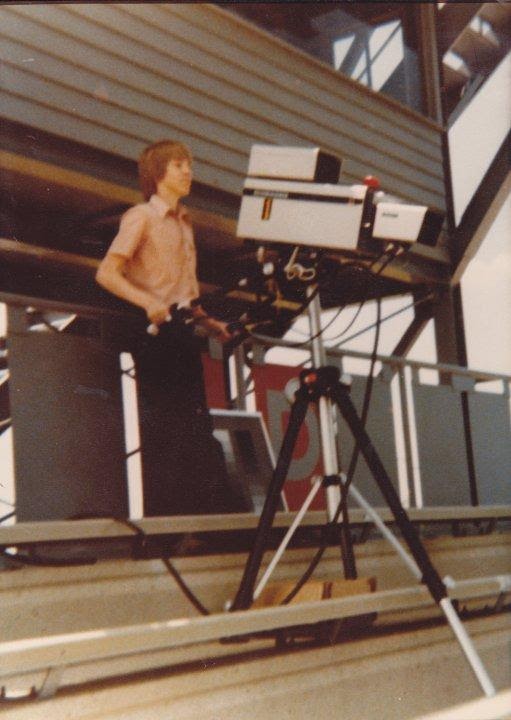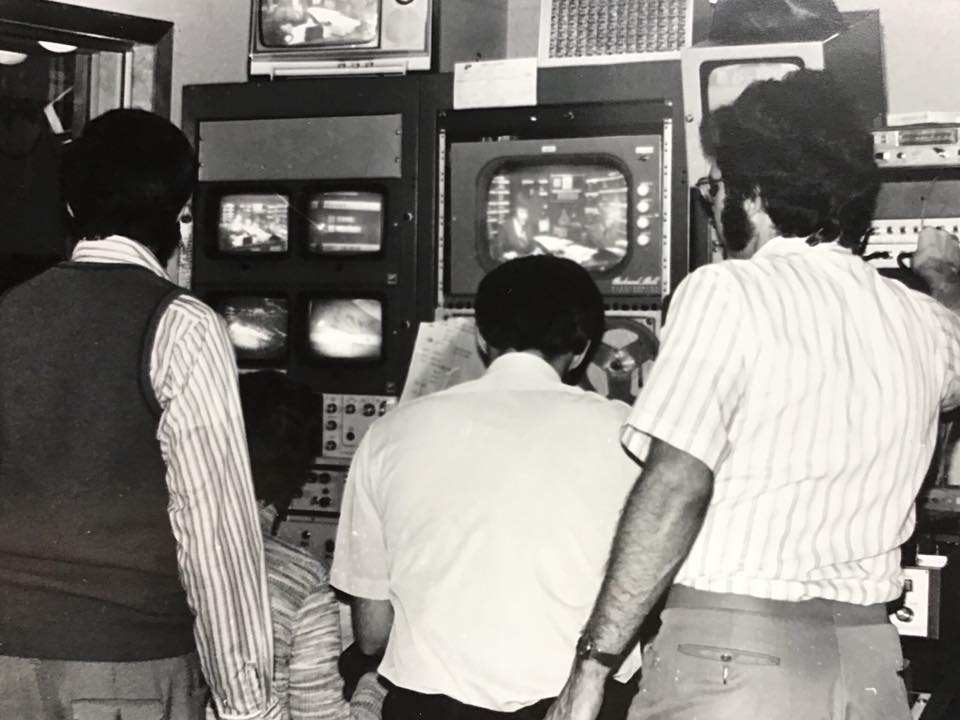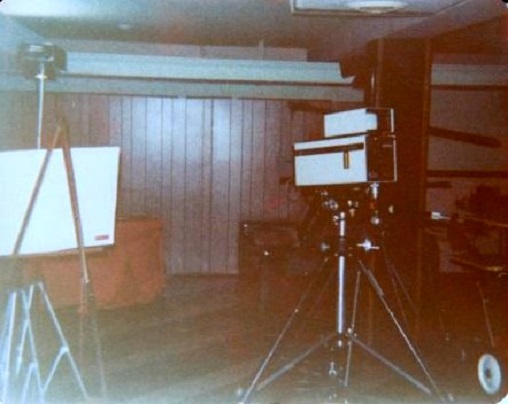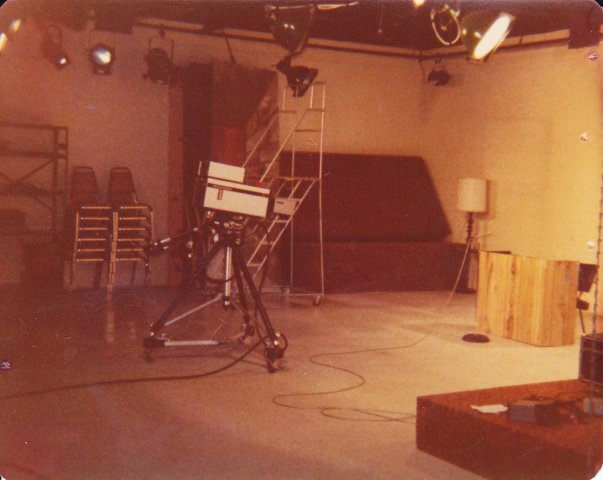A Broadcast Tech Veteran Remembers the Early Years of Cable TV
Local cable TV in the '70's meant small budgets and a lot of patience

MIAMI BEACH, FLA.—In 1977 I was 14 years old and desperately wanting to work in radio or TV. At that time, being 14 really eliminated radio, plus I had a squeaky “kid voice.” Our local cable TV system was one of the earliest in the country and the local person with foresight to start a cable system, Claude Stevanus, would recognize the need for “local TV.”
The area was Tuscarawas County Ohio, a beautiful area of Northeast Ohio, but part of “the valley,” (which to broadcast engineers, translates to “coverage problems”). This is why Mr. Stevanus found a cable (or “master antenna system” originally) was truly needed. At the time, Tuscarawas County had a population of about 90,000 people, but no broadcast TV stations and limited radio.
Our largest TV stations and markets were Cleveland and Columbus, Ohio, followed by Steubenville and Wheeling (WV). Pittsburgh was tough to receive, but if you had a tall tower, you might get KDKA-TV “if the wind were blowing the right direction.” Canton and Akron to the north both had a couple of stations, but if you wanted NBC, CBS, or ABC, those would have to come from a larger TV market.
A ‘Sleepy Little County’
The broadcast TV stations weren’t too interested in Tuscarawas County, which was considered a “sleepy little county” in the “Amish Country” of Ohio (in fact, Sugarcreek is the city with a large Amish population, but that’s just a small part of the county). Knowing that Tuscarawas County received very little to no TV station news coverage, or that those who would, would never bring cameras for events, Stevanus started “Cable TV-2,” our local origination station, and Tuscarawas County’s “own TV station” (albeit “cable TV”) in the late 1960’s/early 1970’s.
*To learn more about Claude Stevanus, recognized by The Cable Center for his pioneering role in cable television, you can visit this link: https://www.cablecenter.org/component/tags/tag/claude-stevanus.html
As an 8th grade Junior High kid, I would go over to Cable TV 2 in our neighboring city (as I lived in Dover, and Cable TV 2 was in New Philadelphia) and pester the personnel to allow me to do anything. TV-2 had a history of using older high school kids to man cameras and be a part of the production staff, but I was pretty little. Fortunately, I was also aggressive enough that they saw the desire to learn and accept me as a “production assistant.”
In the mid-70’s, cable TV local origination/access was more common, but the facilities seemed to run about 10 years behind the technical curve of broadcast TV. In 1977, we had quads, film chains with color Norelco cameras, and our TBC was an Ampex and probably 8RU tall. We had two B&W General Electric cameras with lens turrets, and one Sony Color Trinicon; yes... a studio with two B&W and one color, (plus color film chain: 16mm film and 35mm slide).
The professional video industry's #1 source for news, trends and product and tech information. Sign up below.

If we were doing multi-camera work, this meant we put the main TBC in monochrome, or we were switching between color and B&W cameras! Yes, even in monochrome, you could certainly see a difference in quality between the GE B&W and Sony color camera running in monochrome.
My job was to get there as quickly as I could to help put together the news. This included putting removable plastic letters “in a menu board” for stocks, weather, etc., since we had no CG for this use. This method required luminance keying a camera tilting down while keyed over a slide. A steady arm was needed for the tilt or the words/letters would slightly bounce side to side.
I had gotten into a routine of taking a school bus as far at it would go in Dover (my mom was a school bus driver, so she just asked the driver of that route to let me ride), then get off as close to New Philadelphia as it operated and run the near mile to TV-2 up Tuscarawas Avenue to its location in New Phila.
I’d do this 2-3 times a week, and my mom would pick me up right after the news at 6 p.m. (news was at 5:30), so it timed up with her getting off work and stopping for groceries (if needed), then swinging by TV-2. Since I was 14, all my “work” was “off the record:” I was just a kid they let help out and they were going to officially hire me when I turned 15 so I could be paid ($2.35 per hour!)
Cable TV-2 had about 4-5 full-time employees at its peak (from sales to programming) and usually about 6-8 high school kids working part-time. Here are two high school kids operating cameras for either a soap box derby or baseball game (where we often used scaffolding).

Getting the Signal to Viewers
Though it was cable TV, the cable operator ran some return copper paths to the headend and would end up putting a channel 2 modulator in our production truck. On the events where we would go LIVE from a remote location, we’d have to connect to a known return-path location. Someone would turn off the cable modulator at the station and the remote modulator would turn on. This would be like a TV broadcaster driving around with a back-up transmitter and turning it on from their remotes, but it worked!
Later when the cable company updated their systems in the early 80’s to push/pull cable amplifiers, we were able to use sub-band modulators and hop on about any location for a live-remote. The sub band would push our remote signal to a sub-band receiver at the headend where an auto switch would sense the feed and switch the input of our modulator from “studio” to sub-band receiver.
After helping out for a few months, I fell into a comfortable and fun routine of helping with productions. At this point, I was operating the camera and training with “replays” (which in broadcast would be done in master control). I was nearly ready to fly solo on replays (show playback), followed by training on directing/TD-ing.
Then Disaster Struck
TV-2 and the cable offices were in a large old building, which had previously been a Packard Auto Dealership and garage, but remodeled numerous times with paneling, dropped ceiling, and multiple ways to hide what it had been. I was near my actual hiring point when I finished the production one night and waited at the front doors for mom to pick me up in her ’67 black Bonneville. I still remember standing at the doors and the smell of that old building and the unique smell of the old TV equipment.
Early the next morning, mom woke me up and said “Danny, I have some bad news. TV-2 burned down last night. I can say in all honesty I cried and cried. My TV-2... the place I loved going to and what would be my first job had caught on fire. I still held out hope that perhaps it wasn’t that bad until my mom drove me by the place the next day, Sept. 8, 1977… exactly two weeks before my 15th birthday, when I would legally be able to get paid for working at TV-2. Now all that remained were ashes!
The fire destroyed everything except the oldest cable company installation van, and literally ONE single microphone—an ElectroVoice 635, which apparently fell into water, so it didn’t melt or “burn up.” The funny part of both of these things is that the van had a sliding side door that would literally slide right off the van and onto the ground if you didn’t hold it and slide it gently. The 635 smelled SO BAD that when we would use it post-fire to interview people, their faces would get a horrific look from the smell and they’d back away from the microphone!
After the fire… life went on. I would speak with “my bosses” Tim Stevanus (Claude’s son, a former AFN broadcaster and Ohio University broadcasting graduate) and Denny Henke. They encouraged me to stay in touch and when they re-grouped, we’d pick back up where we left off on my training and employment.
Cable TV-2 would go on to rebuild, but only after a few temporary stops.
After the fire destroyed the station, they moved everything to a house. The house had a fuse panel, so NO studio lights or even stand lights could be used (due to blowing fuses), so the sets were in the detached garage and wheeled out to the driveway. One camera was directed out through a window, and the second shot through a bay window (no kidding!) Bad weather? You had to "call production for a rain delay." Then we moved to a place that at least had ample power (and 7 ½-foot ceilings).
The “new” facility was a former VFW bar, which reeked of 60 years of smoking and spilled beer. The little switcher did have sync, and was literally sunk in a sink!
In the pictures below, you can see the Panasonic Umatic decks, edit controller, BE Cart machine, a TBC under the cart machine.. and the switcher is down on the surface. The "control room" (as it functioned as both master control and production control when automated video wasn't running) was behind the bar where the bartender would have worked (you can see a stack of Umatic tapes on a beer cooler on the right of the lower pic).

The top image was the "studio" with one of our two Shibaden (later Hitachi) cameras... and if you look at both pictures, you'll see that the studio was to the right (wide open) to the "control room." Above the top VCR, the stand light is the same one as in the top picture above the easel (which is also in both pics). Right after that, we moved into our newly built station.

By 1979, we relocated to a building that was smaller than the original and as a result had a little less space in our production areas. Since our old production truck was destroyed in the fire, our engineer designed our switcher rack so it could be easily disconnected and wheeled down a ramp and into a new box truck for production.

All our other racks were hardwired in, but our switcher rack could be wheeled out. What makes this a bit more interesting is that we would pull it for multi-camera shoots at football stadiums, then return to the station after the game, wire it back in, and use it as our master control for the “replay” of that sporting event at 11 p.m.

I returned to the company in 1994 and would work there about five years as Eastern Region Technical Engineer for Times Mirror, then Cox Communications taking care of all the local origination stations from Meriden, Conn. to Texarkana, Texas to Springfield, Ill.
I replaced the Panasonic switcher in rack with a Grass 110. Cameras at this point were JVC KY27C. I’d take us to DigitalS in 1997 (yes, I chose a format that would die, but it did look pretty darn good). Before I left in 1998, I had converted us to all digital for acquisition and editing with editing on Avid Media Composers. Playback was still standard def as composite video.
I also converted us from Umatic ad-insertion on cable channels to digital ad-insertion off servers. In about 1998, the cable system would again be sold, this time to Time Warner, which ended all local origination programming.

Cable TV-2 is now gone. A similar channel is now up in the (literal) thousand channel number range. They still produce local content, but unlike our old days of being “the only game in town” (or the county), they compete with hundreds of other channels. As a young kid getting his first break working in TV, I couldn’t have been more fortunate to get a start at Cable TV-2.
More history of Cable TV-2 can be found here.
Dan Slentz is the chief video engineer for NWS.
